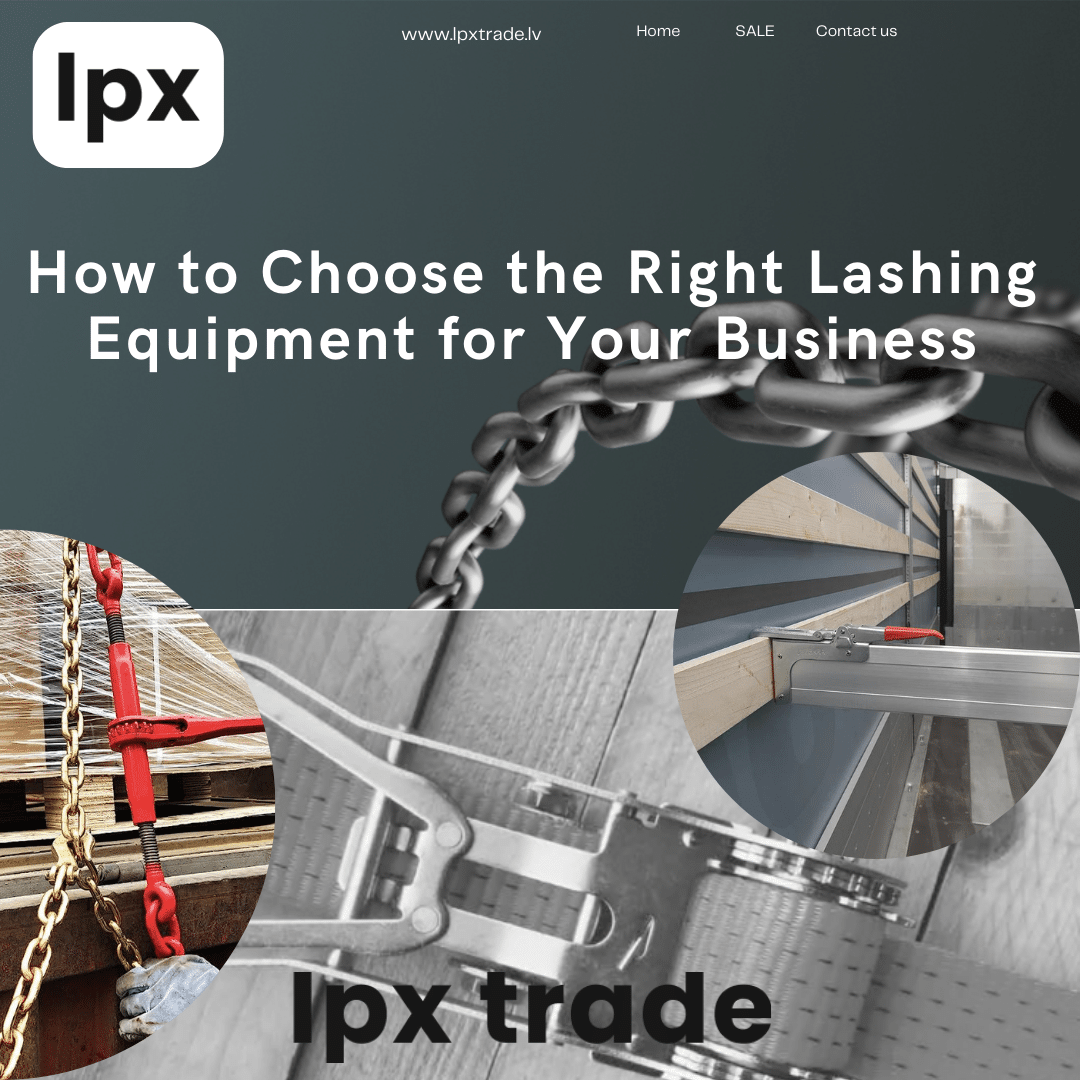How to Choose the Right Lashing Equipment for Your Business
Securing cargo properly is not just a regulation – it’s a daily necessity for logistics companies, drivers, and port operators. Every day thousands of trailers, containers, and ships move goods across Europe and beyond. If the load is not properly lashed, it can shift, cause accidents, damage valuable products, or even lead to costly fines.
Many companies struggle with how to choose lashing equipment that truly fits their operations. The truth is, there’s no universal solution – the right choice depends on the type of cargo, the transport mode, and the working environment. In this guide, we will walk through the main equipment types, the industries they fit, and what to look for before buying.
Why Choosing the Right Lashing Equipment Matters
Safety – Unsecured cargo can shift during braking, turning, or heavy sea waves, creating accidents.
Cost savings – Damaged cargo, rejected shipments, and insurance claims can cost much more than proper equipment.
Compliance – EU and international regulations (EN 12195 and others) require using certified securing equipment.
Efficiency – The right tools make loading faster, easier, and more professional.
For professionals in logistics, trucking, production, and ports, using the proper system is the difference between smooth deliveries and costly disruptions.
Understand Your Cargo and Transport Mode
The first step is knowing what you are transporting and how:
Road transport (trucks, trailers, car carriers): Frequent braking and vibration require flexible but strong securing.
Sea transport (containers, Ro-Ro ships, ports): Cargo faces strong movements, tilting, and stacking pressure.
Rail transport: Long distances and sudden braking demand high-strength securing.
Warehouses/internal logistics: Equipment must be quick to use and safe for repeated operations.
Each mode creates different stresses. A fragile pallet of electronics needs very different securing than a 20-ton machine part.
Types of Lashing Equipment and Where They Fit
At lpxtrade.lv we offer a wide range of solutions for every situation. Here are the most important categories:
1. Ratchet Straps (Standard and Heavy Duty)
The most common and versatile tool for trucks and trailers.
Available in different widths (25mm, 35mm, 50mm, 75mm) and load capacities.
Use lighter straps for pallets and heavier versions for machinery or building materials.
2. One-Way Lashing Straps
Ideal for export shipments in containers.
Designed for single use when equipment will not return.
Cost-effective and compliant with international shipping standards.
3. Lashing Chains
Essential for heavy cargo such as construction machines, steel, or oversized loads.
Provide extra strength where textile straps are not enough.
4. Dunnage Airbags
Perfect for filling empty spaces in containers and trailers.
Prevent pallets from shifting and protect fragile goods.
Especially useful for producers sending goods overseas.
5. Cargo Lock Planks & Heavy-Duty Ratchet Bars
Used inside trailers to secure pallets and block movement.
Much faster to use than straps and ideal for repetitive routes.
6. Anti-Slip Mats
A small but powerful accessory.
Increases friction between cargo and trailer floor.
Allows fewer straps without reducing safety.
7. Car Wheel Ratchet Straps
Specially designed for car carriers.
Secure vehicles by the wheels without damaging suspension or paint.
8. Slings for Cargo Loading
Used in ports and warehouses for lifting heavy or oversized cargo safely.
Available in textile and chain versions.
9. Stretch Film & Pallet Wrapping
The first step of load securing.
Keeps boxes together and stabilizes pallets before lashing.
How to Match Equipment to Your Business
Different industries require different solutions:
Logistics companies – need a broad selection: straps, dunnage airbags, lock planks, and accessories for varied cargo.
Trucking transport companies & professional drivers – rely on durable ratchet straps, anti-slip mats, and cargo lock planks for daily efficiency.
Production companies exporting goods – one-way lashing straps, stretch film, and dunnage airbags for container shipments.
Port operators – heavy-duty chains, slings, and airbags for loading/unloading.
Car transporters – wheel straps and anti-slip mats for safe vehicle delivery.
Buying Checklist – How to Choose Lashing Equipment
Know your cargo – weight, shape, fragility.
Define transport mode – road, sea, rail, or multimodal.
Check regulations – use EU-certified products (EN 12195).
Think efficiency – ratchet bars or lock planks may save time compared to straps.
Add accessories – anti-slip mats, corner protectors, and stretch film increase safety.
Select a trusted supplier – look for tested equipment and professional advice.
Why Work with LPX Trade
Over 30 years of experience in logistics and cargo securing.
Wide range of certified lashing equipment for all industries.
EU-tested products, fully compliant with safety standards.
Expert support – we help you choose the right solution for your business.
Fast delivery across the Baltics and EU.
Conclusion
The right lashing system is not just a purchase – it’s an investment in safety, efficiency, and reputation. Whether you are a trucking company, a manufacturer exporting in containers, or a port operator handling heavy cargo, choosing the correct equipment protects both your goods and your people.
If you want to choose lashing equipment tailored to your business, explore our range at lpxtrade.lv or contact our team for expert advice. We will help you secure your cargo the professional way.

